Superfund Sites in Reuse in Indiana
If you are having trouble viewing the map in your browser, click the 'View larger map' link below
American Chemical Service, Inc. 
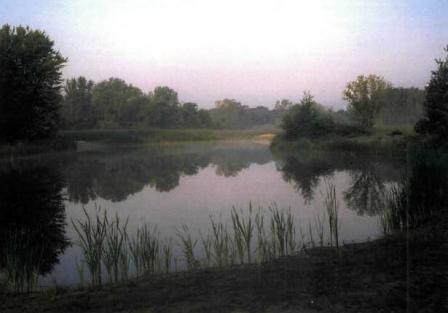 American Chemical Service, Inc.The 23-acre American Chemical Service, Inc. Superfund site is located in Griffith, Indiana. American Chemical Service, Inc. operated a solvent recovery firm, a chemical manufacturer and a chemical drum reconditioning business on site since starting in 1955. Improper waste disposal practices contaminated groundwater, surface water and soil. EPA added the site to the National Priorities List (NPL) in 1989. Cleanup activities included treatment of contaminated groundwater, soil and sediment. The cleanup also removed chemical drums and debris. Long-term groundwater and well monitoring are ongoing. American Chemical Service, Inc. continues to make specialty chemicals at its facility on site.
American Chemical Service, Inc.The 23-acre American Chemical Service, Inc. Superfund site is located in Griffith, Indiana. American Chemical Service, Inc. operated a solvent recovery firm, a chemical manufacturer and a chemical drum reconditioning business on site since starting in 1955. Improper waste disposal practices contaminated groundwater, surface water and soil. EPA added the site to the National Priorities List (NPL) in 1989. Cleanup activities included treatment of contaminated groundwater, soil and sediment. The cleanup also removed chemical drums and debris. Long-term groundwater and well monitoring are ongoing. American Chemical Service, Inc. continues to make specialty chemicals at its facility on site.
Last updated September 2019
As of December 2019, EPA had data on one on-site business. This business employed 25 people and generated an estimated $733,000 in annual sales revenue. For additional information click here.
For more information:
Augustus Hook Property
The 13-acre Augustus Hook Property Superfund site is located in Frankfort, Indiana. Porcelain enamel manufacturer Ingram-Richardson, Inc. operated next to the site until 1981. Ingram-Richardson, Inc. bought the property in 1953 and began using it as a disposal area sometime after 1953. Site operators disposed of various plant wastes in a 4- to 6-acre wetland area at the site. These disposal practices resulted in the contamination of area soil and groundwater. Cleanup activities included removal of toxic materials, backfilling the wetland area with clean clay and treatment of contaminated groundwater. In 2006, following the successful cleanup of the site, EPA issued a Ready for Reuse Determination, declaring the site safe for unrestricted commercial, industrial or recreational use. Based on current zoning, the reasonably anticipated future land use for the site is commercial.
Last updated September 2019
As of December 2019, EPA did not have economic data related to on-site businesses, or economic data were not applicable due to site use. For additional information click here.
For more information:
Cliff Drive Groundwater Contamination
The Cliff Drive Groundwater Contamination site is Logansport, Indiana. The city first discovered contaminants in the municipal well system in 1994. Contamination is still present in five supply wells. Indiana Department of Environmental Management (IDEM) has investigated the site several times but has not identified the source of the contamination. Site investigations are underway. Area residents continue to use the municipal water supply for drinking water. Water pumped from the contaminated wells is treated before distribution in the municipal water supply system. According to IDEM, the water supply meets Safe Drinking Water Act standards. EPA placed the site on the National Priorities List (NPL) in May 2019. Based on sampling data, commercial, industrial, residential and agricultural land overly the groundwater contamination plume.
Last updated September 2019
As of December 2019, EPA did not have economic data related to on-site businesses, or economic data were not applicable due to site use. For additional information click here.
For more information:
Conrail Rail Yard (Elkhart)
The Conrail Rail Yard (Elkhart) Superfund site covers 2,500 acres in Elkhart, Indiana. It includes a rail yard, a drag car racing strip, residences and other areas impacted by contamination. Operations at the 675-acre rail yard area began in 1956. Rail yard operations transferred to Conrail in 1976 and to Norfolk Corporation in 1999. Norfolk Southern Corporation continues to operate the rail yard, which serves as a classification distribution yard for freight cars. Rail car repair, engine cleaning and diesel refueling facilities are also located at the yard. The Osceola Dragway, a commercial drag car racing facility, also continues to operate on site. Past activities and solvent spills at the rail yard and drag strip resulted in contaminated groundwater. EPA placed the site on the National Priorities List (NPL) in 1990. Cleanup activities include providing affected residents with an alternate drinking water source, containing and monitoring contaminated groundwater, and sampling for chemical vapors in residences. Where sampling identifies chemical vapors in homes, Conrail installs basement venting units. The remedy also includes a groundwater extraction system at the rail yard and groundwater recirculation and treatment at the drag strip. Injection of substances to break down solvent contaminants in groundwater is also planned at the drag strip.
Last updated September 2019
As of December 2019, EPA had data on 3 on-site businesses. These businesses employed 81 people and generated an estimated $13,836,000 in annual sales revenue. For additional information click here.
For more information:
Continental Steel Corp. 



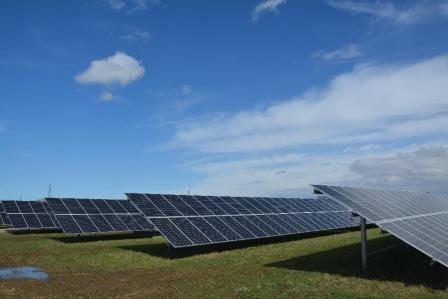 Continental Steel Corp.The 183-acre Continental Steel Corp. Superfund site is located in Kokomo, Indiana. From 1914 to 1986, a steel manufacturing facility operated on site. Facility operations resulted in soil, sediment, surface water and groundwater contamination. In 1986, Continental Steel filed for bankruptcy. In 1989, EPA placed the site on the National Priorities List (NPL). During cleanup, EPA and the state worked with the community and local developers to support the return of parts of the site to productive use. In 1991, a local florist began using an on-site warehouse and sublet part of the property for equipment storage. A construction company purchased part of the site property for equipment storage. EPA also worked with the community to evaluate other reuse opportunities. Part of the cleanup allowed the local government to move forward with a stormwater project that uses the on-site quarry as a stormwater retention/detention basin. EPA worked with Howard County to remove and relocate fill material from an area with poor drainage. This free fill was utilized at the site, thereby saving the project millions of dollars. Cleanup includes treatment of contaminated groundwater, excavation of contaminated soil and sediment, capping areas of residual contamination, and controls on land and groundwater use. Three wind turbines on site produce over half of the energy needed to power groundwater treatment operations. A community-based redevelopment plan, announced in 2006, called for retail space as well as recreation areas at the site. The first phase of the 60-acre Wildcat Creek Soccer Complex sports facility was completed in 2015. When finished, it will accommodate 30 youth and full-size soccer fields, a 1.25-mile walking trail, parking for 400 vehicles, a concession stand, storage facilities and restrooms. The Complex has enhanced community access to recreational and outdoor activities. In December 2016, a $10 million, 7-megawatt solar facility began operating at the site. The 29-acre Kokomo Solar Park includes 21,000 solar panels and provides power for up to 1,000 homes. It revitalizes part of the site that had been vacant for decades. In April 2017, EPA Region 5 presented the local government with a RENEW Award in recognition of excellence in site reuse. EPA Region 5 developed the RENEW Award to recognize outstanding efforts in the reuse of Superfund sites that strengthen communities and advance environmental protection.
Continental Steel Corp.The 183-acre Continental Steel Corp. Superfund site is located in Kokomo, Indiana. From 1914 to 1986, a steel manufacturing facility operated on site. Facility operations resulted in soil, sediment, surface water and groundwater contamination. In 1986, Continental Steel filed for bankruptcy. In 1989, EPA placed the site on the National Priorities List (NPL). During cleanup, EPA and the state worked with the community and local developers to support the return of parts of the site to productive use. In 1991, a local florist began using an on-site warehouse and sublet part of the property for equipment storage. A construction company purchased part of the site property for equipment storage. EPA also worked with the community to evaluate other reuse opportunities. Part of the cleanup allowed the local government to move forward with a stormwater project that uses the on-site quarry as a stormwater retention/detention basin. EPA worked with Howard County to remove and relocate fill material from an area with poor drainage. This free fill was utilized at the site, thereby saving the project millions of dollars. Cleanup includes treatment of contaminated groundwater, excavation of contaminated soil and sediment, capping areas of residual contamination, and controls on land and groundwater use. Three wind turbines on site produce over half of the energy needed to power groundwater treatment operations. A community-based redevelopment plan, announced in 2006, called for retail space as well as recreation areas at the site. The first phase of the 60-acre Wildcat Creek Soccer Complex sports facility was completed in 2015. When finished, it will accommodate 30 youth and full-size soccer fields, a 1.25-mile walking trail, parking for 400 vehicles, a concession stand, storage facilities and restrooms. The Complex has enhanced community access to recreational and outdoor activities. In December 2016, a $10 million, 7-megawatt solar facility began operating at the site. The 29-acre Kokomo Solar Park includes 21,000 solar panels and provides power for up to 1,000 homes. It revitalizes part of the site that had been vacant for decades. In April 2017, EPA Region 5 presented the local government with a RENEW Award in recognition of excellence in site reuse. EPA Region 5 developed the RENEW Award to recognize outstanding efforts in the reuse of Superfund sites that strengthen communities and advance environmental protection.
Last updated September 2019
As of December 2019, economic data were not publicly available for this site. For additional information click here.
For more information:
- From Steel to Solar and Soccer: Mixed-Use Redevelopment in Indiana at the Continental Steel Superfund Site in Kokomo, Indiana (PDF)(24 pp, 4.2 MB)
- Site Redevelopment Profile: Continental Steel Superfund Site (PDF)(3 pp, 1.5 MB)
- Superfund Site Profile Page
- Solar Farm at Superfund Redevelopment Site in Kokomo, Indiana
Douglass Road/Uniroyal, Inc., Landfill
The 16-acre Douglass Road/Uniroyal, Inc. Landfill Superfund site is located in Mishawaka, Indiana. Uniroyal, Inc. operated an unlined landfill on site that accepted waste between 1954 and 1979. Landfill disposal practices contaminated the groundwater under the site. EPA added the site to the National Priorities List (NPL) in 1989. Uniroyal, Inc. filed for bankruptcy in 1991, and EPA funded remaining cleanup efforts. EPA connected residents to municipal water supplies and constructed a landfill cap. Working with local citizens, EPA and the local government successfully designed, built and operated a water filtration buffer system for the site. Construction reached completion in 2001. Since then, the city of Mishawaka has built an on-site infiltration basin for the Douglas Road highway expansion project, which began in 2001. The state constructed a wetlands treatment system in 2011 and currently operates the groundwater extraction and treatment system. A private entity purchased the landfill parcels in 2018 and is in discussions with EPA regarding its potential future use.
Last updated September 2019
As of December 2019, EPA did not have economic data related to on-site businesses, or economic data were not applicable due to site use. For additional information click here.
For more information:
Elm Street Ground Water Contamination
The 18.5-acre Elm Street Ground Water Contamination Superfund site is in Terre Haute, Indiana. In the 1980s, sampling identified industrial chemicals in Terre Haute’s Elm Street municipal well field. Several area industries likely contributed to site contamination. The three primary source areas are the Gurman Container and Supply property, the Ashland property, and the Machine Tool Services (MTS) property. The Gurman property has been in operation since 1922. The facility currently recycles, reconditions and sells chemical storage drums. The Ashland property served as a supplier of Texaco products from the 1930s through the 1980s. MTS purchased this property and leased it to various companies for waste oil recycling and storage. Historical records from the late 1800s indicate that the MTS property was a locomotive repair and maintenance facility. The MTS facility also stored petroleum products and solvents. EPA added the site to the National Priorities List (NPL) in 2007. Gurman Container and Supply continues to operate drum recycling and machine tool repair facilities on site. The Ashland property is currently vacant following demolition of buildings and removal of contaminated soil. Ashland completed this work in 2013. Today the MTS facility is an active machine tool repair business. The cleanup plan for all areas of the site includes removing accessible soil contamination, using a soil vapor extraction system to remove contaminated soil vapors, land use restrictions to protect remedy structures, and monitoring of groundwater. Cleanup is underway.
Last updated September 2019
As of December 2019, EPA had data on 2 on-site businesses. These businesses employed 23 people and generated an estimated $1,507,000 in annual sales revenue. For additional information click here.
For more information:
Franklin Street Groundwater Contamination
The Franklin Street Groundwater Contamination Superfund site is in Spencer, Indiana. An area of groundwater contamination is contaminating several municipal supply wells for the community. Despite several investigations, the source of contamination has not yet been identified. EPA added the site to the National Priorities List (NPL) in 2018. EPA is gathering information to determine appropriate next steps. Area residents continue to use the municipal water supply for drinking water. Water pumped from the contaminated wells is treated before distribution in the municipal water supply system.
Last updated September 2019
As of December 2019, EPA did not have economic data related to on-site businesses, or economic data were not applicable due to site use. For additional information click here.
For more information:
Galen Myers Dump/Drum Salvage
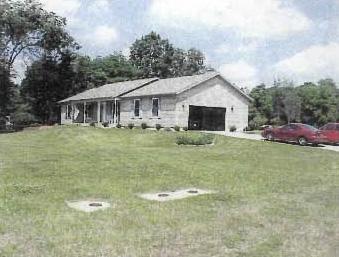 Galen Myers Dump/Drum SalvageThe 5-acre Galen Myers Dump/Drum Salvage Superfund site is located in St. Joseph County, Indiana. From 1970 to 1983, the dump accepted 55-gallon steel drums. Dump operators emptied the collected drums by spilling the contents on the ground. Operators later resold the drums as trash containers. Working with the Indiana Department of Environmental Management (IDEM), EPA determined that dumping had contaminated surface soils and groundwater. EPA added the site to the National Priorities List (NPL) in 1989. EPA and IDEM removed drums, flammable materials and contaminated soils. The agencies also provided alternate water supplies to about 180 homes affected by the contamination. Groundwater monitoring is ongoing. In 2016, EPA sampled indoor air at residences near the site. Based on sampling results, EPA installed vapor mitigation systems at nine properties. These systems will be operated and maintained until no longer needed. In August 2005, an individual purchased the site property and constructed a single-family home and two unattached sheds to store equipment for their landscaping business, which operates from the former dump site.
Galen Myers Dump/Drum SalvageThe 5-acre Galen Myers Dump/Drum Salvage Superfund site is located in St. Joseph County, Indiana. From 1970 to 1983, the dump accepted 55-gallon steel drums. Dump operators emptied the collected drums by spilling the contents on the ground. Operators later resold the drums as trash containers. Working with the Indiana Department of Environmental Management (IDEM), EPA determined that dumping had contaminated surface soils and groundwater. EPA added the site to the National Priorities List (NPL) in 1989. EPA and IDEM removed drums, flammable materials and contaminated soils. The agencies also provided alternate water supplies to about 180 homes affected by the contamination. Groundwater monitoring is ongoing. In 2016, EPA sampled indoor air at residences near the site. Based on sampling results, EPA installed vapor mitigation systems at nine properties. These systems will be operated and maintained until no longer needed. In August 2005, an individual purchased the site property and constructed a single-family home and two unattached sheds to store equipment for their landscaping business, which operates from the former dump site.
Last updated September 2019
As of December 2019, EPA had data on one on-site business. This business employed 5 people and generated an estimated $222,000 in annual sales revenue. For additional information click here.
For more information:
Ingram Richardson Company
The 17-acre Ingram Richardson Company site is in Frankfort, Indiana. From 1915 to 1981, the Ingram Richardson Company produced frit material for steel, cast iron and other porcelain products on site. Waste dumping, a leaking transformer and asbestos-containing building materials contaminated the. The Frankfort Fire Department cleaned up an oil spill on site in 1990. EPA led further cleanup to remove contaminated soil and debris from the site. Cleanup finished in 1994. To support the community’s interest in understanding the site’s potential for reuse, EPA developed a Ready for Reuse Determination for the site in 2007. The document clarified that the site was ready to support commercial or industrial land uses. Today, a local non-profit organization operates a 14,000-square-foot facility at the site. The organization offers services to clients with developmental disabilities and to their families. These include day care services focused on socialization and learning, job training and supported community living.
Last updated September 2019
As of December 2019, EPA had data on 3 on-site businesses. These businesses employed 28 people and generated an estimated $546,000 in annual sales revenue. For additional information click here.
For more information:
Jacobsville Neighborhood Soil Contamination
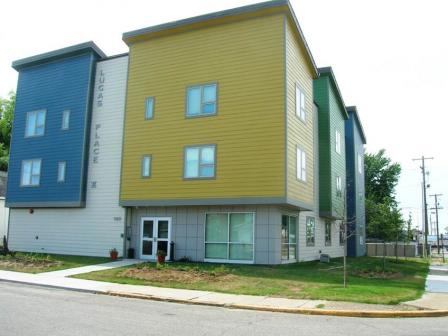 Jacobsville Neighborhood Soil ContaminationThe 4.5-square-mile Jacobsville Neighborhood Soil Contamination Superfund site is located in Evansville, Indiana. Several manufacturing companies operated at the site beginning in the 1880s. Windborne particulates from manufacturing operations resulted in widespread contamination in the community. EPA placed the site on the National Priorities List (NPL) in 2004. Cleanup activities include removal of contaminated soil and backfilling of these areas with clean soil. Cleanup also includes restoration of residential properties. As of April 2017, workers had sampled about 3,800 properties, collected about 30,000 soil samples, and cleaned up almost 2,000 residential yards. When the multi-year cleanup started in 2010, EPA’s remediation of two vacant lots in the Jacobsville neighborhood enabled a local nonprofit, the ECHO Housing Corporation, to construct a 26-unit residential building for homeless and disabled military veterans. The nonprofit began the project in 2010 and finished it in mid-2011. Residents moved into the building in November 2011. EPA is currently working with ECHO Housing Corporation on another residential development for Indiana veterans. EPA is also working with several nonprofits and developers to help them move forward with other housing options in Evansville. The cleanup effort has not displaced any residents.
Jacobsville Neighborhood Soil ContaminationThe 4.5-square-mile Jacobsville Neighborhood Soil Contamination Superfund site is located in Evansville, Indiana. Several manufacturing companies operated at the site beginning in the 1880s. Windborne particulates from manufacturing operations resulted in widespread contamination in the community. EPA placed the site on the National Priorities List (NPL) in 2004. Cleanup activities include removal of contaminated soil and backfilling of these areas with clean soil. Cleanup also includes restoration of residential properties. As of April 2017, workers had sampled about 3,800 properties, collected about 30,000 soil samples, and cleaned up almost 2,000 residential yards. When the multi-year cleanup started in 2010, EPA’s remediation of two vacant lots in the Jacobsville neighborhood enabled a local nonprofit, the ECHO Housing Corporation, to construct a 26-unit residential building for homeless and disabled military veterans. The nonprofit began the project in 2010 and finished it in mid-2011. Residents moved into the building in November 2011. EPA is currently working with ECHO Housing Corporation on another residential development for Indiana veterans. EPA is also working with several nonprofits and developers to help them move forward with other housing options in Evansville. The cleanup effort has not displaced any residents.
Last updated September 2019
As of December 2019, EPA did not have economic data related to on-site businesses, or economic data were not applicable due to site use. For additional information click here.
For more information:
Neal's Dump (Spencer)
The 1-acre Neal's Dump (Spencer) Superfund site is located near Spencer, Indiana. A disposal area for industrial wastes operated on site from 1966 to 1971. Items disposed of at the site include electrical capacitors, capacitor parts, contaminated rags and sawdust. Disposal activities resulted in the contamination of soil and groundwater. EPA placed the site on the National Priorities List (NPL) in 1986. The site’s potentially responsible party (PRP) completed cleanup activities to residential standards under EPA’s oversight. Cleanup activities included the removal of contaminated materials and capacitors and disposal of these materials at an off-site facility. The PRP backfilled and reseeded the excavated areas. In 1999, EPA took the site off the NPL. The PRP completed cleanup activities at the site in 2003. The site is a residential backyard; it remains in continued use as of 2019.
Last updated September 2019
As of December 2019, EPA did not have economic data related to on-site businesses, or economic data were not applicable due to site use. For additional information click here.
For more information:
Poer Farm
The 5-acre Poer Farm Superfund site is located in a rural area about 3 miles north of Wilkinson, Indiana. From 1973 until 1983, site owners stored drums of solvents and paint resins at the site. Leaking drums resulted in soil contamination. EPA removed all waste and soil from the drum storage areas on site. EPA disposed of contaminated materials at off-site facilities. EPA added the site to the National Priorities List (NPL) in 1984. Because EPA had removed contamination, no further cleanup was necessary. EPA took the site off the NPL in 1991. Part of the site is now in agricultural reuse, producing hay for livestock.
Last updated September 2019
As of December 2019, EPA did not have economic data related to on-site businesses, or economic data were not applicable due to site use. For additional information click here.
For more information:
Prestolite Battery Division
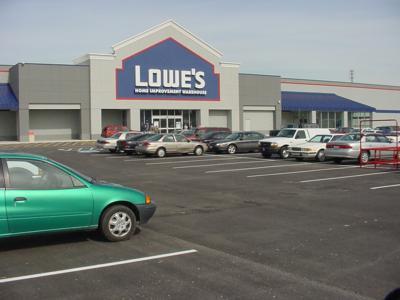 Prestolite Battery DivisionThe 18-acre Prestolite Battery Division Superfund site is located in Knox County, Indiana. A battery manufacturing facility operated on site from 1945 to 1985. Site operators disposed of lead-contaminated sludge and wastewater in a sewer system. Improper waste handling practices and spills contaminated air, soil and surface water. The sewer system leaked wastewater, which contaminated groundwater. EPA placed the site on the National Priorities List (NPL) in 1989. Cleanup workers removed soil and monitored groundwater. In 1996, EPA entered into a Prospective Purchaser Agreement (PPA) with a local real estate developer. The PPA resulted in commercial redevelopment at the site. Available infrastructure next to the site and the site’s location along a high-traffic roadway also encouraged reuse. Businesses began to open in 2001. Today, businesses at the site include a home improvement center, three restaurants, two banks and a hotel.
Prestolite Battery DivisionThe 18-acre Prestolite Battery Division Superfund site is located in Knox County, Indiana. A battery manufacturing facility operated on site from 1945 to 1985. Site operators disposed of lead-contaminated sludge and wastewater in a sewer system. Improper waste handling practices and spills contaminated air, soil and surface water. The sewer system leaked wastewater, which contaminated groundwater. EPA placed the site on the National Priorities List (NPL) in 1989. Cleanup workers removed soil and monitored groundwater. In 1996, EPA entered into a Prospective Purchaser Agreement (PPA) with a local real estate developer. The PPA resulted in commercial redevelopment at the site. Available infrastructure next to the site and the site’s location along a high-traffic roadway also encouraged reuse. Businesses began to open in 2001. Today, businesses at the site include a home improvement center, three restaurants, two banks and a hotel.
Last updated September 2019
As of December 2019, EPA had data on 6 on-site businesses. These businesses employed 226 people and generated an estimated $31,228,000 in annual sales revenue. For additional information click here.
For more information:
Reilly Tar & Chemical Corp. (Indianapolis Plant) 

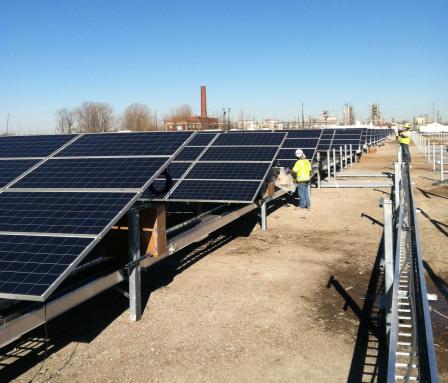 Reilly Tar & Chemical Corp. (Indianapolis Plant)The 120-acre Reilly Tar & Chemical Corp. (Indianapolis Plant) Superfund site is located in Indianapolis, Indiana. A specialty chemicals production facility has operated on site since the early 1950s. Until 1972, a coal-tar refining and wood treatment facility that used creosote also operated at the site. Operators used a trench, a landfill and several pits on site to dispose of wastes. A lime pond received boiler cooling water. Waste handling practices resulted in groundwater and soil contamination. EPA placed the site on the National Priorities List (NPL) in 1984. Cleanup involved extracting and containing groundwater. EPA’s cleanup plan also included a permeable cover for the wood treatment and storage area and removal or treatment of contaminated soil. Groundwater monitoring is ongoing. Chemical production operations continue at the site. Developer Hanwha Q CELLS constructed a 10.8-megawatt solar energy generation facility on the southern 43 acres of the site. The Maywood Solar Farm is the first utility-scale solar farm on a Superfund site in the nation. The facility began operating in February 2014. EPA Region 5 honored developer Hanwha Q CELLS with the Region’s first-ever RENEW Award in recognition of its commitment to the site’s safe and beneficial reuse.
Reilly Tar & Chemical Corp. (Indianapolis Plant)The 120-acre Reilly Tar & Chemical Corp. (Indianapolis Plant) Superfund site is located in Indianapolis, Indiana. A specialty chemicals production facility has operated on site since the early 1950s. Until 1972, a coal-tar refining and wood treatment facility that used creosote also operated at the site. Operators used a trench, a landfill and several pits on site to dispose of wastes. A lime pond received boiler cooling water. Waste handling practices resulted in groundwater and soil contamination. EPA placed the site on the National Priorities List (NPL) in 1984. Cleanup involved extracting and containing groundwater. EPA’s cleanup plan also included a permeable cover for the wood treatment and storage area and removal or treatment of contaminated soil. Groundwater monitoring is ongoing. Chemical production operations continue at the site. Developer Hanwha Q CELLS constructed a 10.8-megawatt solar energy generation facility on the southern 43 acres of the site. The Maywood Solar Farm is the first utility-scale solar farm on a Superfund site in the nation. The facility began operating in February 2014. EPA Region 5 honored developer Hanwha Q CELLS with the Region’s first-ever RENEW Award in recognition of its commitment to the site’s safe and beneficial reuse.
Last updated September 2019
As of December 2019, EPA had data on one on-site business. This business employed 45 people and generated an estimated $68,571,429 in annual sales revenue. For additional information click here.
For more information:
- Utility-Scale Solar Energy Development: Reilly Tar & Chemical Corp. (Indianapolis Plant) Superfund Site (PDF) (14 pp, 5.8 MB, About PDF)
- Superfund Site Profile Page
Southside Sanitary Landfill 


 Southside Sanitary LandfillThe 324-acre Southside Sanitary Landfill Superfund site is located in Indianapolis, Indiana. Once considered a hazard to human health and the environment, the site now provides alternative energy production and green space for the community, in addition to a safely operating landfill. Landfill operations began at the site in 1971. In 1984, sampling identified groundwater contamination from site activities. EPA added the site to the National Priorities List (NPL) in 1989. Cleanup included landfill liquid collection and treatment and groundwater monitoring. EPA took the site off the NPL in 1997. Crossroads Greenhouses, one of the largest methane-powered greenhouses in the United States, has captured more the 2.2 million cubic feet of methane gas each day from the site since 1998. Decomposing waste at the site provides all of the energy used in the 6.5-acre greenhouse. Landfill gas recovery wells and an intricate pipeline system collect and transport methane gas from the site to the neighboring greenhouse. In addition, the Rolls Royce Allison Aircraft Engine Plant began obtaining methane gas from the site’s landfill in 1998. Because methane burns much more cleanly than other fuels, the use of this energy source has reduced the plant’s nitrogen oxide emissions. In 1999, a nine-hole golf course opened on site. In 2003, the landfill donated land for use by the Indianapolis School Board for environmental education. Local schoolchildren tour the site as part of their curriculum on landfill science.
Southside Sanitary LandfillThe 324-acre Southside Sanitary Landfill Superfund site is located in Indianapolis, Indiana. Once considered a hazard to human health and the environment, the site now provides alternative energy production and green space for the community, in addition to a safely operating landfill. Landfill operations began at the site in 1971. In 1984, sampling identified groundwater contamination from site activities. EPA added the site to the National Priorities List (NPL) in 1989. Cleanup included landfill liquid collection and treatment and groundwater monitoring. EPA took the site off the NPL in 1997. Crossroads Greenhouses, one of the largest methane-powered greenhouses in the United States, has captured more the 2.2 million cubic feet of methane gas each day from the site since 1998. Decomposing waste at the site provides all of the energy used in the 6.5-acre greenhouse. Landfill gas recovery wells and an intricate pipeline system collect and transport methane gas from the site to the neighboring greenhouse. In addition, the Rolls Royce Allison Aircraft Engine Plant began obtaining methane gas from the site’s landfill in 1998. Because methane burns much more cleanly than other fuels, the use of this energy source has reduced the plant’s nitrogen oxide emissions. In 1999, a nine-hole golf course opened on site. In 2003, the landfill donated land for use by the Indianapolis School Board for environmental education. Local schoolchildren tour the site as part of their curriculum on landfill science.
Last updated September 2019
As of December 2019, EPA had data on 2 on-site businesses. These businesses employed 26 people and generated an estimated $67,738,000 in annual sales revenue. For additional information click here.
For more information:
- Reuse and the Benefit to Community: Southside Sanitary Landfill (PDF) (6 pp, 255 K, About PDF)
- Redevelopment of the Southside Sanitary Landfill Superfund Site (PDF)(3 pp, 2.9 MB)
- Superfund Site Profile Page
U.S. Smelter and Lead Refinery, Inc.
The 79-acre U.S. Smelter and Lead Refinery, Inc. (USS Lead) Superfund site is located in East Chicago, Indiana. A copper smelter and a lead refinery and smelter operated on site from 1906 to 1985. A pesticide manufacturer also operated nearby. These operations resulted in the contamination of soil and groundwater with lead and arsenic. EPA placed the site on the National Priorities List (NPL) in 2009. The site is divided into two areas – a residential area and the USS Lead facility property plus site groundwater. The residential area is divided into three zones. Zone 1 is a part of a neighborhood that includes Carrie Gosch Elementary School and a public housing complex operated by the East Chicago Housing Authority. Zones 2 and 3 are primarily single-family homes. In 2012, EPA selected a cleanup remedy for the residential area. It includes excavation and off-site disposal of contaminated soil. Short-term remedies addressing soil contamination include temporary protective barriers and warning signs. EPA conducted in-home cleaning at the housing complex in Zone 1 in 2016. After residents were relocated, the housing complex was demolished in 2017. EPA initiated soil cleanups and in-home cleanings in Zone 2 and Zone 3 in 2016; those efforts are ongoing. In 2019, EPA updated the Zone 1 remedy. Remaining contaminated soil will be dug up and taken to an off-site facility. The contaminated soil will be replaced with clean soil. Continued site uses include residential, commercial, industrial and public service uses. With EPA’s mission to protect human health and the environment in mind, EPA established the Superfund Task Force in May 2017 to provide recommendations for improving and expediting site cleanups and promoting redevelopment. Based on the Superfund Task Force recommendations, EPA identified the site as a Redevelopment Opportunity site – a site with the greatest expected redevelopment potential.
Last updated September 2019
As of December 2019, EPA had data on 32 on-site businesses. These businesses employed 579 people and generated an estimated $116,855,220 in annual sales revenue. For additional information click here.
For more information:
Waste, Inc., Landfill
The 32-acre Waste, Inc., Landfill Superfund site is located on a former wetland area in Michigan City, Indiana. From 1966 to 1982, the site accepted industrial wastes. Site practices resulted in contamination in soil, groundwater and sediment of Trail Creek, which borders the landfill and eventually discharges into Lake Michigan. In 1987, EPA added the site to the National Priorities List (NPL). Cleanup activities included abandonment of a well, removal and disposal of an underground fuel storage tank, and placement of fish advisory signs along Trail Creek. The cleanup plan also required consolidating waste, lining an active sewer line and installing a landfill liquid collection system. In 1997, the potentially responsible parties (PRPs) constructed a landfill cap and a gas collection system at the site. Following cleanup, landfill gas, surface water and groundwater monitoring are ongoing. Michigan City currently owns the site property. Michigan City has completed a recreation reuse plan for the site as part of a larger master planning process for the Trail Creek Corridor. Plans are ongoing to open the site by using existing site access roads for recreational uses such as running and biking. It is anticipated that this work will begin in 2020.
Last updated September 2019
As of December 2019, EPA did not have economic data related to on-site businesses, or economic data were not applicable due to site use. For additional information click here.
For more information:
Wedzeb Enterprises, Inc.
The 0.75-acre Wedzeb Enterprise, Inc. Superfund site is in Lebanon, Indiana. Wedzeb Enterprises, Inc. bought electrical equipment for resale and stored the equipment in warehouses on site. In 1981, a fire destroyed one of the two storage warehouses. Contaminated materials from the burned electrical equipment mixed with water used to put out the fire and filtered into the ground. EPA added the site to the National Priorities List (NPL) in 1983. EPA removed contaminated sediment from a sanitary sewer and removed contaminated soil from the site. EPA cleaned up the site to allow for unrestricted use. EPA deleted the site from the NPL in 1991. A construction business currently operates on site.
Last updated September 2019
As of December 2019, EPA had data on one on-site business. This business employed 20 people and generated an estimated $1,900,000 in annual sales revenue. For additional information click here.
For more information:
Whiteford Sales & Service Inc./Nationalease 
The 11-acre Whiteford Sales and Service, Inc./Nationalease Superfund site is located in South Bend, Indiana. From 1967 to 1983, a truck washing and degreasing facility operated on site. During these years, wastewater discharged into three dry wells on site, resulting in contamination of soil and groundwater. In 1980, St. Joseph County purchased the site property for use in the planned realignment of an adjacent street and construction of an overpass. In 1983, the County used soil from the site for the new overpass. Engineers soon discovered the three dry wells and contaminated soil. The potentially responsible party (PRP) removed and properly disposed of the sludge and surrounding contaminated soil from the wells. In 1990, EPA added the site to the National Priorities List (NPL). EPA determined that all contamination had been removed and took the site off the NPL in 1996. Today, the property serves as a stormwater retention basin.
Last updated September 2019
As of December 2019, EPA did not have economic data related to on-site businesses, or economic data were not applicable due to site use. For additional information click here.
For more information:
